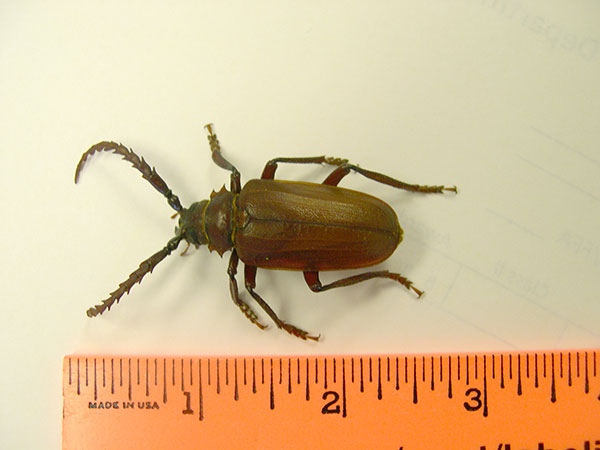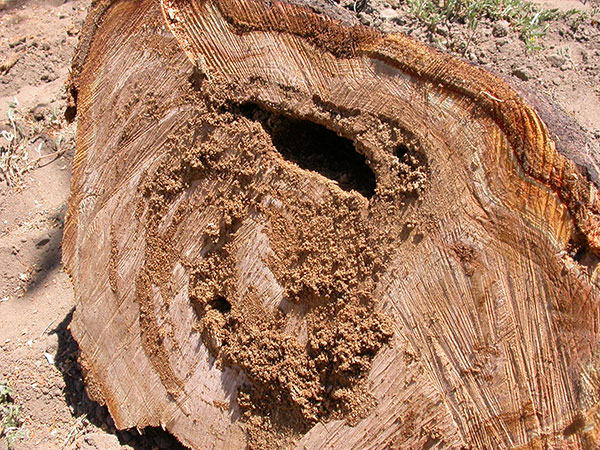Prionus Root Borer
HOSTS
- Apricot
- Cottonwood
- Native ornamental trees and shrubs
- Other stone fruits
- Peach
- Sweet cherry
DESCRIPTION
Prionus californicus appears to have a particular affinity for stone fruit trees growing in sandy soils of Utah. Young larvae tunnel into the soil to seek out tree roots. The younger larvae begin feeding on smaller diameter roots and ultimately reach the tree crown as mature larvae as they move inward and upward along larger roots. Following 3 or more years of root and crown feeding and upward movement, the insect pupates close to the soil surface. The adults then emerge and seek out mates.
BIOLOGY
The adult California prionus is a large beetle, ranging in size from 1¾ - 2¼ inches long (45-60 mm). Adults are reddish-brown in color, relatively smooth and shiny with long, deeply notched antennae. The larvae can be as long as 4¼ inches (108 mm) with a diameter of approximately ¾ inch (18 mm) at the widest point of its body.
SYMPTOMS
- Deep furrows in the roots causing severe reduction in a tree's ability to take up water and nutrients
- Spiraling furrows in the crown and upper roots
GENERAL MANAGEMENT
Monitoring:
Watch for adult beetles in early July.
Currently, there are no registered insecticides for prionus root borers. Several insecticides registered for stone fruit may provide incidental suppression of the adult. To prevent prionus infestations, maintain tree health and prevent stress. Watch for canopy dieback or sudden loss of tree vigor.



